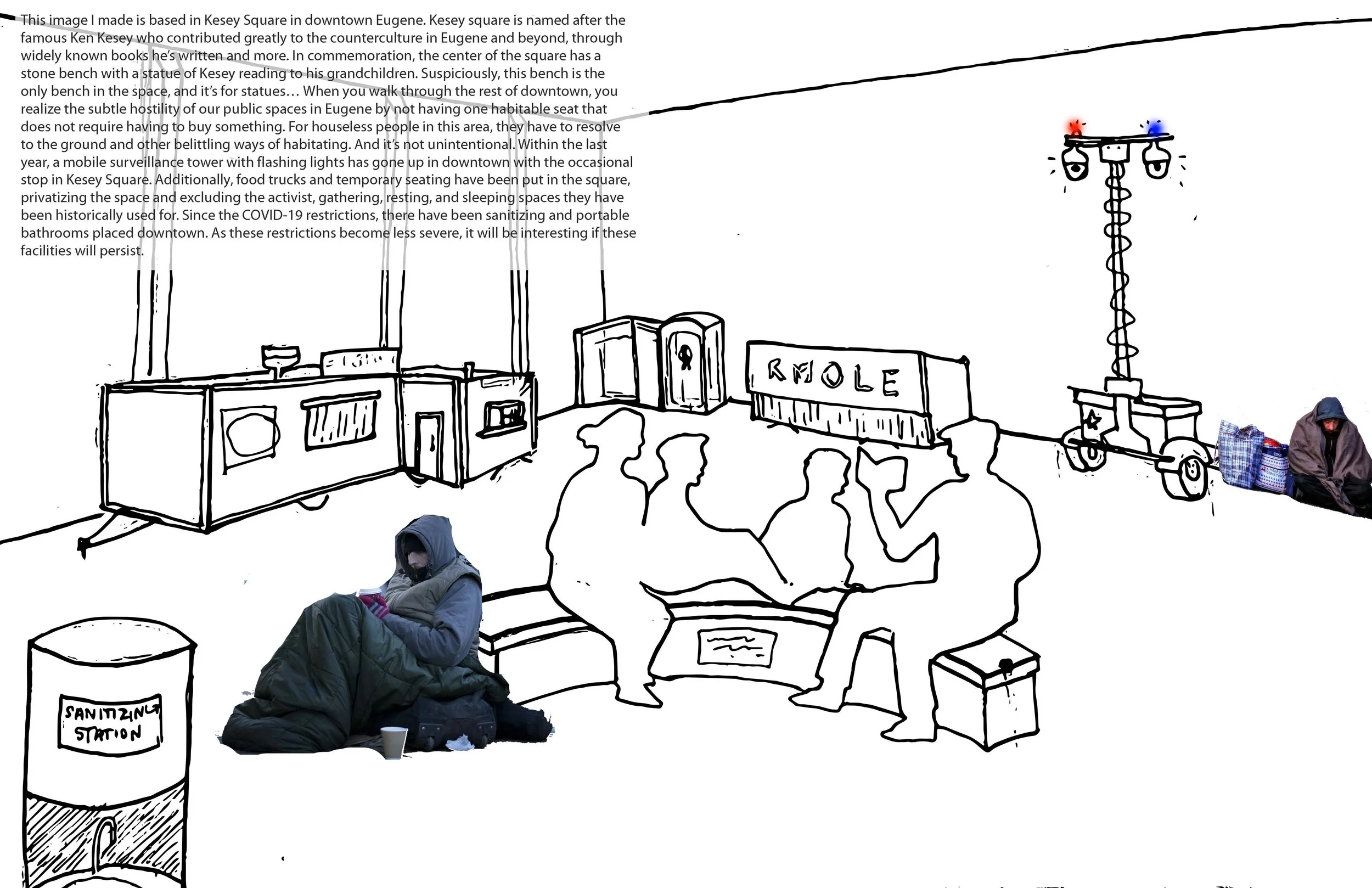
Home, Housing and Homelessness
LA 510, University of Oregon
-
How does the idea of home shape housing?
Students understand the influence of the conventional American idea of home on housing provision and industry. This includes theoretical explanations of informality and the rise in housing insecurity.
-
How does homelessness arise from urban policy?
Students will make connections between homelessness and the spatial allocation of resources/infrastructure - all within the “politics of difference.”
-
How can we develop short-term solutions to house people during the pandemic?
Students will articulate potential solutions for an inclusive public space and accessible housing.
Carolyn Corl
Alicia Nametka
A typology of homelessness in Eugene, Oregon
A typology examines the kinds of shelter space available in Eugene. A topology examines the more complex situation of this space as it relates to the surrounding stuff, flows and people. It is networked space. Topologies change as the social and physical networks adjust to changing conditions, i.e. the coronavirus.
In a continuation of our shelter-as-home study, students analyze the arrangement and relationships of their chosen shelter spaces. They first diagram the resources that shelter provides (if any) and the infrastructure available to the resident. Infrastructure can range from the provision of shelter, shade and heat to meeting bodily needs, like clean water, food or waste disposal. They also examine the social infrastructure made up of spaces that enhance connections between people. These relationships may be positive (i.e. friendships, social service providers) or negative (i.e. someone upset that public space is inhabited in this way).
Isabella Ospina Rodriguez
Right to the city
For Henri Lefebvre, the right to the city is the right to urban life. M. Purcell describes this as “inhabiting the city well,” pointing out that Lefebvre marked the city’s inhabitants as the shapers of public space.
Claiming a right to the city is claiming a right to inhabit well, to have access to the things one needs to live a dignified life. For users, urban space is a creative and cooperative human project, one that thrives on interaction and affective relations. - Purcell, 2013 p. after Lefebvre.




